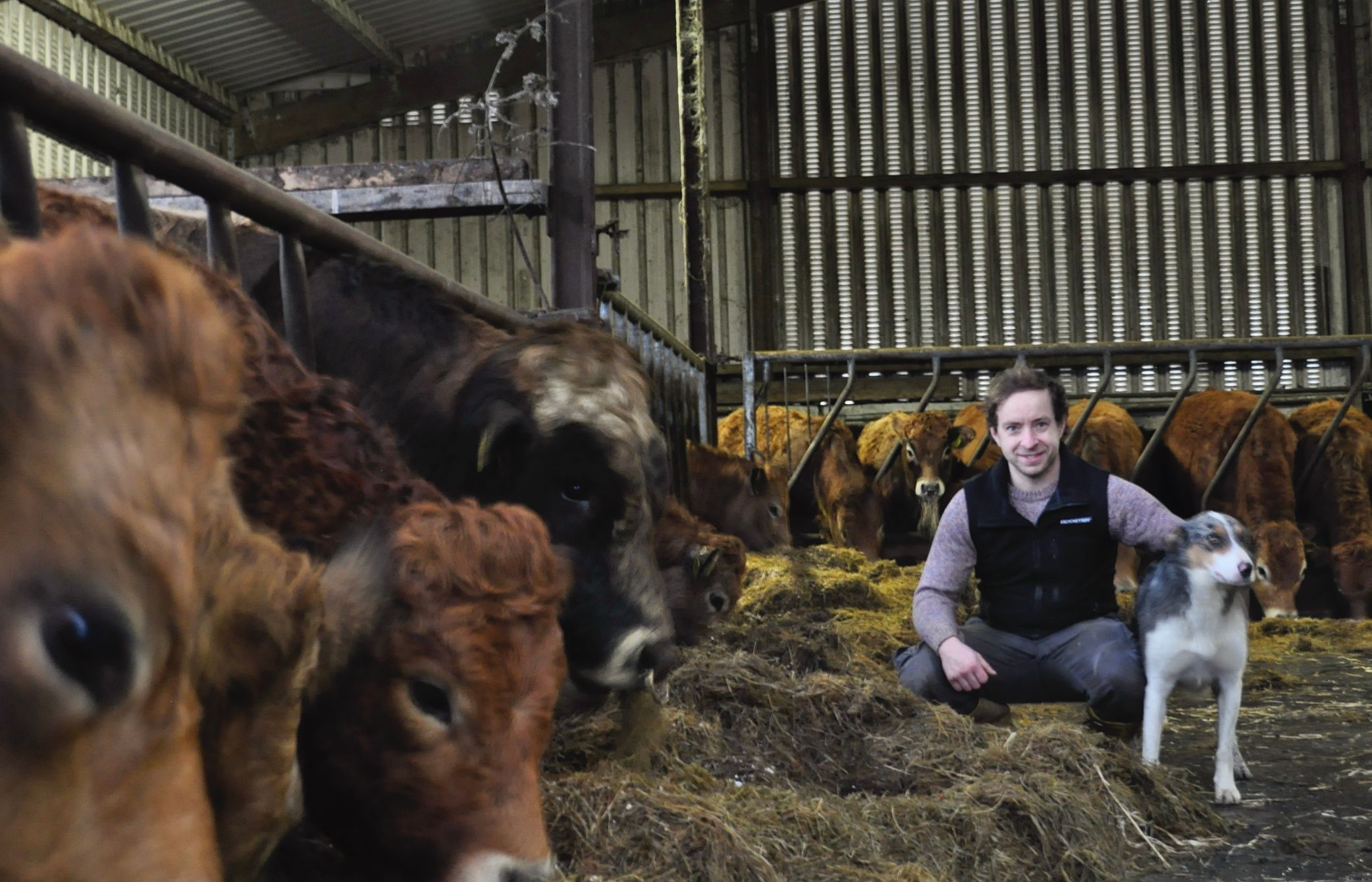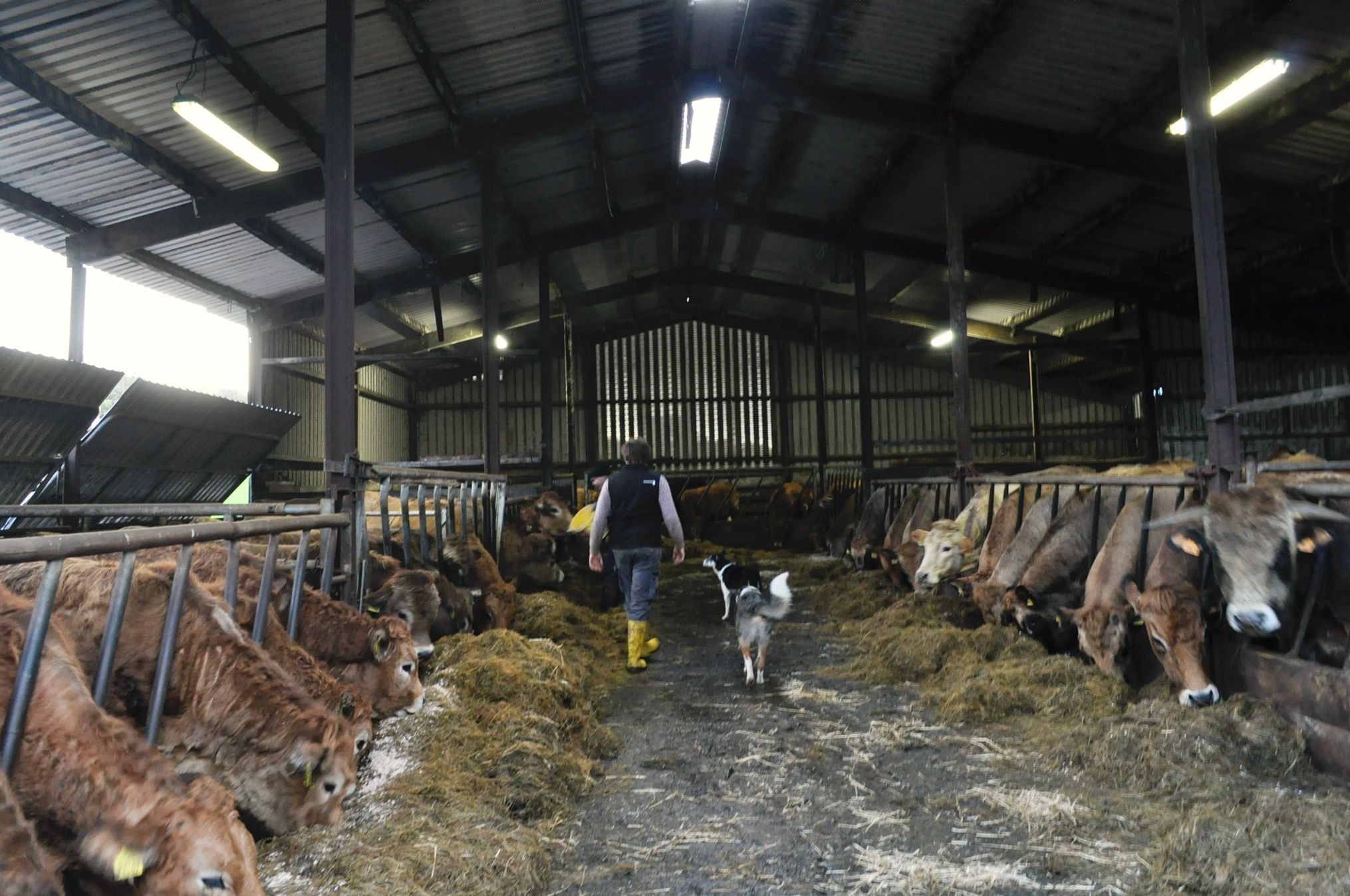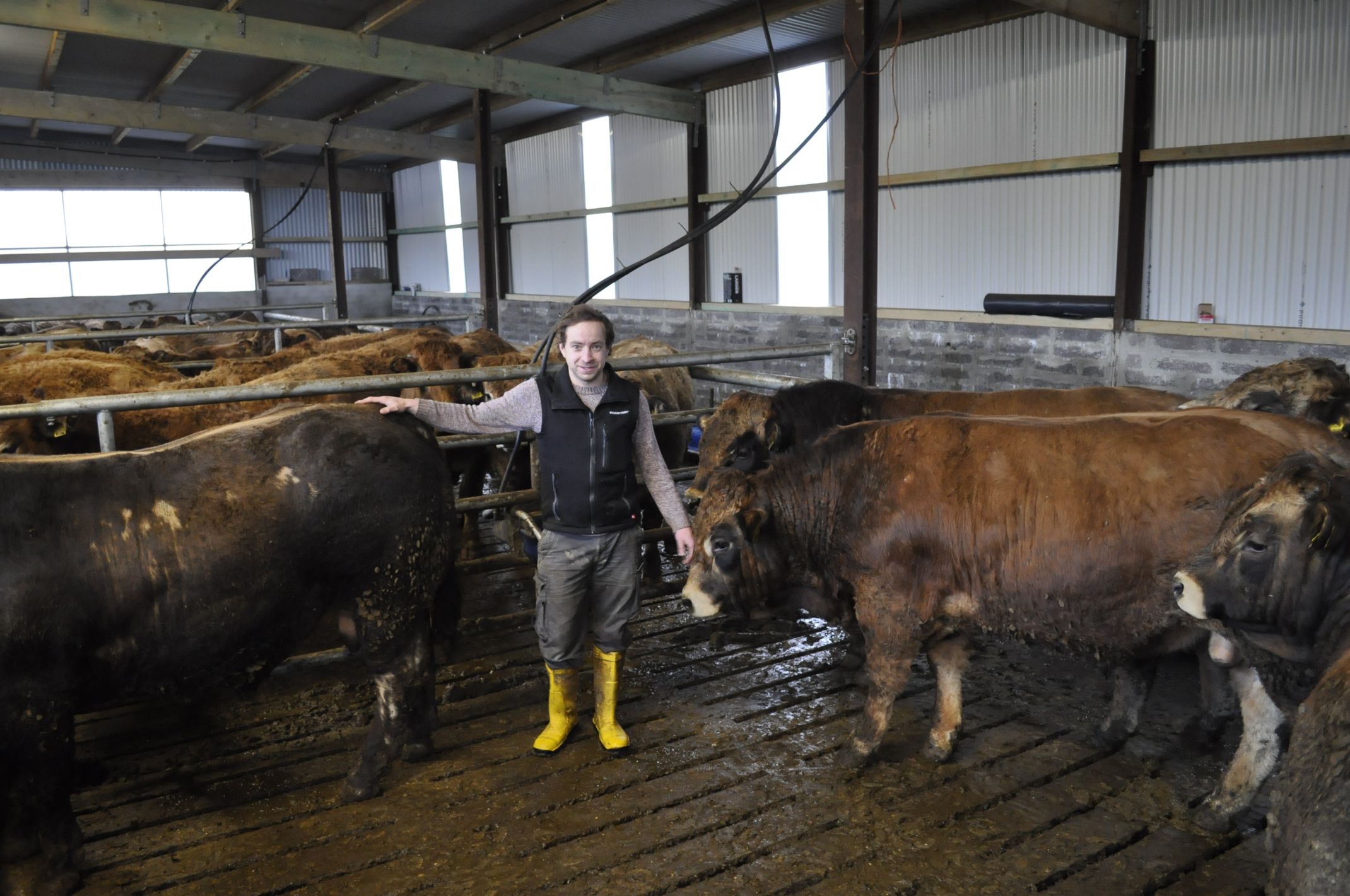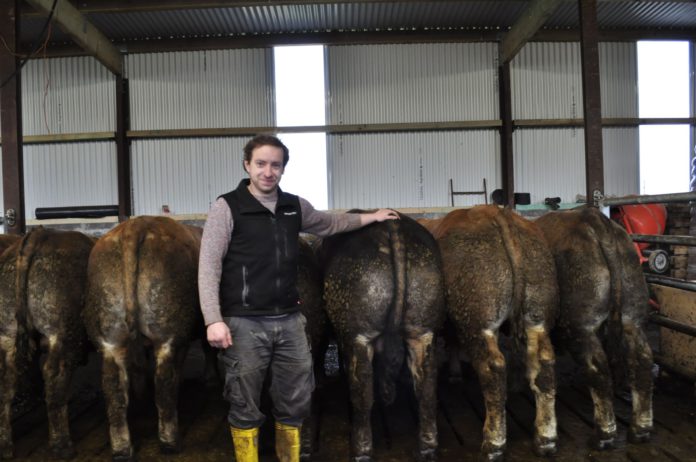As part of this week’s Suckler Focus, Catherina Cunnane, editor of That’s Farming, speaks to the O’Driscoll family owners of Thornhill Aubracs.
Thirty years ago, Sean O’Driscoll made history by being the first farmer to introduce Aubrac cattle, a French native breed, to the Emerald Isle.
In 1991, Sean, and his cousin, Derry, purchased embryos from the breed’s home and subsequent progeny were born in Skibbereen, Co. Cork the following year.
From humble beginnings, Thornhill Aubracs now comprises of approximately 65 breeding females. Running the 140-acre farm is a part-time affair for Sean, and his son, Jack, who is a chartered accountant and will become an official chartered tax advisor this coming year.
Why Aubrac?
Ease of maintenance and management, coupled with ease of calving, docility, maternal abilities, high fertility, and longevity, makes the breed a perfect fit for the Cork duo’s farm.
“Aubracs are all-rounders. We breed a very maternal line that can ensure cows have adequate milk to grow good shapey calves off grass,” Jack of Thornhill Aubracs told That’s Farming.
“Easy calving is a huge priority for us as we are not around full-time to keep an eye on things. Quick growth rates of tasty weanlings give the options to sell as weanlings or go onto finish.”
“I love the shape of calves and weanlings we can get. When born, they are very small and light, but you can nearly see them growing from day one. Furthermore, they are very hardy and require minimal intervention and interference, which is very important as a suckler farmer.”

Demand from dairy farmers
They have a split autumn and spring calving system, with approximately have in autumn and the other half in spring.
The O’Driscolls have demand for bulls from dairy farmers nationwide, and with the size of dairy herds increasing, they have had to breed bulls earlier to give them time to develop.
They are in the position where they have close to 30 bulls annually, with the majority venturing to dairy herds. This gives a dairy farmer “a continental calf with strong resilience and hardiness at birth without a difficult calving”, according to Jack.
“It gives the dairy farmer a very good value add to his/her calves, leaving the yard after a few weeks. The native breeds might make €140-€160 at a few weeks of age in the mart, whereas the Aubrac should command double that. It is a big bonus for the dairy farmer.”
The benefits are two-fold as this allows the Cork natives to operate a 30-month-old calving system, meaning these females are falling into a calving period already in place.
“Dairy farmers are seeing the benefit of the progeny off the Aubrac bull, and those buying their calves are seeing the benefit of finishing those cattle now. There was a lot of hesitancy previously due to the similarities in colour to the Jersey when born, but that is no longer an issue.”
‘There is no point in having a big scopey cow’
“Aubracs are hardy cows that have a low body weight in comparison to cows of other breeds, but they should have a big bag of milk that ensures that they are weaning bull calves around 420kg and heifers 380kg off grass solely. If they can’t do that, we need to look at the cow.”
“The shape of the animal for E and U grading comes from the breeding, as breeding beats feeding every day. Our ideal cow would be one that is 670 – 720kg, long, deep, and relatively low. There is no point in having a big scopey cow; it is not what an Aubrac is meant to be.”
Jack maintains a large portion of the herd can wean progeny at close to 60% of their body weight, if they keep quality grass ahead of the herd all-year. With the belief that “grass is king”, they reseed close to 10% of their land annually as a means of overall farm improvement.

Over one calf per year
In an attempt to improve their enterprise a step further, the O’Driscolls have tightened their culling regime, and reduced the age profile of their cows, having previously bred females up to 18 years of age.
“We would have over one calf per cow per year, as there are always a few sets of twins and we have had minimal losses over the last number of years. Our targets are weights and shape.”
“Breeding quality cattle is the most important thing. If you get your shape, milk, feet, backline, depth, docility all correct, you are on a winner.”
“The key elements to a successful suckler operation are weaning all calves and a low-cost input system. We feed our herd in approximately forty-five minutes when not in calving season. You cannot spend hours doing manual jobs in a yard; it must be streamlined to ensure efficiency. Also, quality progeny win every day over stars and other indicators.”

Future
With “goalposts always moving”, the O’Driscolls aim year-on-year to improve their herd’s quality and aim to focus on this, as opposed to further expansion.
“We are part-time and will never be full-time. Suckler farming will always be here because we cannot all milk cows due to land constraints and whatnot.”
“I would like to see more pedigree breeders in all breeds out there. If you can improve pedigree genetics, the farmer that uses them on the commercial herd is already at a benefit.”
“Also, I think good cattle will always command a price. The big issue is that the money is not in suckling compared to dairying and hence, you will always hear us shouting with envy.”
“But, it is up to the farmer to control what goes on inside his own gate and produce the best they can. We need to work on reducing the costs of the suckler farm and improve what we produce and hope it works.” Jack concluded.
Information
Follow Thornhill Aubracs on Facebook and Instagram.
To share your story, email – [email protected]





